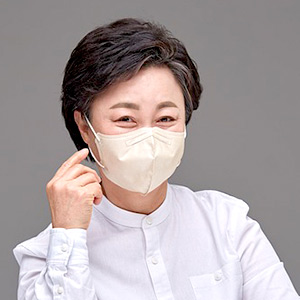Ménière’s Disease Helped by Chiropractic
The Journal of Upper Cervical Chiropractic Research published the results of a case study on March 21, 2023, documenting the resolution under chiropractic care of long-standing Meniere’s Disease and multiple associated symptoms.
 The
National Institute on Deafness and Other Communication
Disorders defines this condition by stating, "Meniere’s
disease is a disorder of the inner ear that causes severe
dizziness (vertigo), ringing in the ears (tinnitus), hearing
loss, and a feeling of fullness or congestion in the ear."
They estimate that approximately 615,000 people in the
United States are currently diagnosed with Meniere’s disease
and that 45,500 cases are newly diagnosed every year.
The
National Institute on Deafness and Other Communication
Disorders defines this condition by stating, "Meniere’s
disease is a disorder of the inner ear that causes severe
dizziness (vertigo), ringing in the ears (tinnitus), hearing
loss, and a feeling of fullness or congestion in the ear."
They estimate that approximately 615,000 people in the
United States are currently diagnosed with Meniere’s disease
and that 45,500 cases are newly diagnosed every year.
In this case, a 48-year-old woman, a retired nurse, went to the chiropractor. The woman had been suffering with Meniere’s Disease for many years, as well as a long list of associated symptoms from this condition. Her condition was initially only in one ear. Eventually, her other ear also started to have problems.
The woman’s history involved a number of accidents and incidents including, as a child, falling off her bike requiring head and knee stitches, falling off a horse and being kicked in the jaw, and falling out of a tree onto her back, leaving her unable to walk for two days. As an adult, she passed out in her kitchen and hit her forehead on a highchair, then the back of her head on the floor, knocking her unconscious. She had also been involved in multiple car accidents.
The woman had a variety of symptoms including vertigo episodes with nausea and vomiting, hearing loss, tinnitus, dizziness, imbalance, hearing distortion, brain fog, severe sweating, severe depression, anxiety with panic attacks, IBS, TMJ dysfunction, migraines, headaches, chronic fatigue, neck pain and radiating low back pain.
Because the woman was suffering with so many symptoms, her MD’s dismissed her as being a hypochondriac or someone just looking for drugs. She recalled her story by saying, "I have been called lots of things. Hypochondriac was one, liar, drug seeker, psychotic, and a hermit. Hard to explain how the medical world left me to die. I thought I was dying every day. I was told to learn to live with it. I can’t describe it, but it is awful. Meniere’s patients don’t realize that this is a massive autonomic dysfunction problem. They think that either somehow Meniere's is causing all of this without realizing these are just more symptoms of the bigger problem or they have zero clue that all of this is connected because the medical community tells them there is nothing wrong."
Specific forms of chiropractic care were started to correct the subluxations that were detected during an examination. Because the patient lived many miles from the original chiropractor, care was also given by additional chiropractors closer to the woman’s home who used the same approach.
Over the course of care, it was recorded that the woman improved in all aspects of her previous conditions. The original chiropractor, and author of this study kept in touch with this woman to monitor the progress of her care. He also performed a follow-up examination to verify the improvement. In recording the woman’s overall improvement, the author stated in his conclusion, "Chiropractic care had resolved all her complaints except hearing loss though it did improve."
 This
study begins by explaining, "Sever’s disease (SD) is of
common occurrence in the paediatric [sic] population
and the condition has been described as one which causes
pain in the posterior heel and is more common in children
from 8 to 15 years of age." The study continues, "Children
and adolescents engaged in high rates of physical activity
seem to be at a greater risk of developing the condition,
which is more common in boys."
This
study begins by explaining, "Sever’s disease (SD) is of
common occurrence in the paediatric [sic] population
and the condition has been described as one which causes
pain in the posterior heel and is more common in children
from 8 to 15 years of age." The study continues, "Children
and adolescents engaged in high rates of physical activity
seem to be at a greater risk of developing the condition,
which is more common in boys." In
this case, a woman, who was 26.4 weeks into her pregnancy,
sought chiropractic care for help for severe pelvic pain in
her symphysis pubis region. The woman reported that the pain
started at about the 10th week of her pregnancy. She rated
her pain as a 10 out of 10 (worst possible) and
characterized it as a constant, sharp, throbbing, burning,
and aching pain. Movement, especially walking, made her pain
even worse. The woman reported that in addition to her
pelvic pain, she was also experiencing secondary symptoms of
lower back and neck pain, but she said that these were not
as severe as her pelvic pain.
In
this case, a woman, who was 26.4 weeks into her pregnancy,
sought chiropractic care for help for severe pelvic pain in
her symphysis pubis region. The woman reported that the pain
started at about the 10th week of her pregnancy. She rated
her pain as a 10 out of 10 (worst possible) and
characterized it as a constant, sharp, throbbing, burning,
and aching pain. Movement, especially walking, made her pain
even worse. The woman reported that in addition to her
pelvic pain, she was also experiencing secondary symptoms of
lower back and neck pain, but she said that these were not
as severe as her pelvic pain. The
study in Cureus begins by explaining, "Temporomandibular
disorders (TMDs) constitute pathological symptoms that
affect the temporomandibular joint (TMJ) and surrounding
musculoskeletal tissues." The study authors further explain,
"Annually, TMD occurs in 4% of the adult population in the
USA. TMD is primarily characterized by musculoskeletal pain
syndromes which comprise myofascial pain, myalgia, and
arthralgia."
The
study in Cureus begins by explaining, "Temporomandibular
disorders (TMDs) constitute pathological symptoms that
affect the temporomandibular joint (TMJ) and surrounding
musculoskeletal tissues." The study authors further explain,
"Annually, TMD occurs in 4% of the adult population in the
USA. TMD is primarily characterized by musculoskeletal pain
syndromes which comprise myofascial pain, myalgia, and
arthralgia."